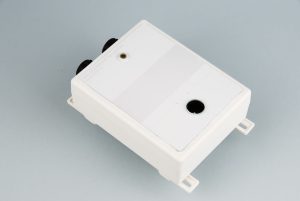The Lunático Astronomía CloudWatcher Cloud Detector is now offered in a new model that offers an extremely sensitive light sensor to measure sky quality. So weather for astronomical or solar observing imaging, you’ll know you have the best conditions available.
 As the Lunático team notes, “The current version includes a new extremely sensible light sensor, which, along with the dichroic UV/IR filter, enables the CloudWatcher to not only distinguish between day and night, but also measure the sky brightness in mpsas. Now, along with providing comprehensive information about the sky conditions (clouds, rain, light, temperature, relative humidity and atmospheric pressure), it can measure the sky quality.”
As the Lunático team notes, “The current version includes a new extremely sensible light sensor, which, along with the dichroic UV/IR filter, enables the CloudWatcher to not only distinguish between day and night, but also measure the sky brightness in mpsas. Now, along with providing comprehensive information about the sky conditions (clouds, rain, light, temperature, relative humidity and atmospheric pressure), it can measure the sky quality.”
The AAG CloudWatcher system was created to provide a high-precision, full-featured, low-cost system for monitoring sky conditions. Its intuitive graphic software allows at-a-glance reading of information. The system allows the user to set measuring parameters, achieving a powerful and very accurate sky quality detector.
The Lunático Astronomía CloudWatcher provides a comprehensive and easily understandable measurement of atmospheric conditions. All the data collected by the sensors and the available CloudWatcher anemometer are reflected in your computer through their corresponding graphs allowing for a thorough and functinal measurement of atmospheric conditions.
Using an infrared sensor the CloudWatcher measures the temperature of the sky, and with an internal electronic thermometer, it measures the ambient temperature. Both data are used to determine the existence of clouds. The measurement result is easily read in the “Cloud” graphic.
Unlike other detectors, the CloudWatcher allows the user to set the measurement parameters to adjust them to the specific circumstances of their environment.
The AAG CloudWatcher system includes a 4-sensor detector unit housed in an enhanced, durable enclosure, a 10-meter length of weather-proof cable for connecting the unit to a PC, and a relay for opening and closing the observatory. The unit’s four detectors consist of an infrared sensor that measures sky temperature for comparison to the internal temperature, which data are related by a powerful algorithm to determine the presence of clouds, a variable capacitor to determine the existence of rain, a light sensor that is even capable of detecting presence of the Moon and a temperature sensor.
The AAG CloudWatcher software accommodates multiple users in the LAN, allows independent parameterization of master and remote installations, incorporates a sky-temperature correction model to account for excessive atmospheric long-wave radiation during summer, permits all alerts to be defined as specific sounds, includes a complete set of properties/methods for inter-program communication, is compatible with ACP, CCDCommander, and CCDAutopilot 3/4, and can combine information from any standard weather station supported by Virtual Weather Station or Weather Display software.
You can learn more about the Lunático Astronomía CloudWatcher here.
The Sun is more active than it’s been in years and if that’s not enough, we have the Annular Solar Eclipse on October 14, 2023 and the Total Solar Eclipse on April 8, 2024! If you’d like to learn more about the technology behind solar observing, solar imaging and more, you can check out our free publication, “The Definitive Guide to Viewing and Imaging the Sun”. You don’t have to sign up or provide any information, simply click here and enjoy reading!
And to make it easier for you to get the most extensive news, articles and reviews that are only available in the magazine pages of Astronomy Technology Today, we are offering a 1-year magazine subscription for only $6! Or, for an even better deal, we are offering 2 years for only $9. Click here to get these deals which only will be available for a very limited time. You can also check out a free sample issue here.

